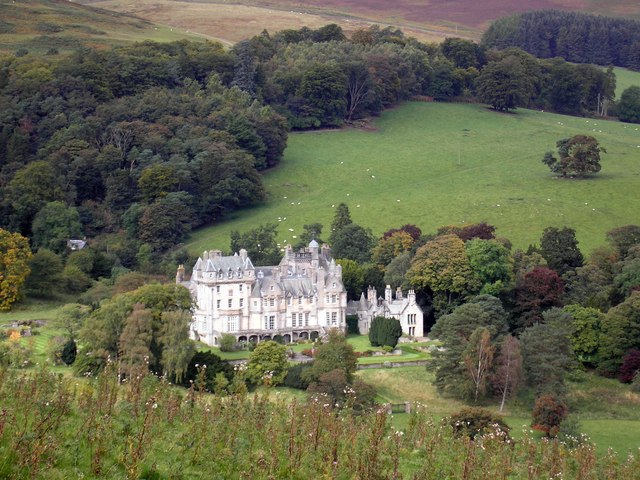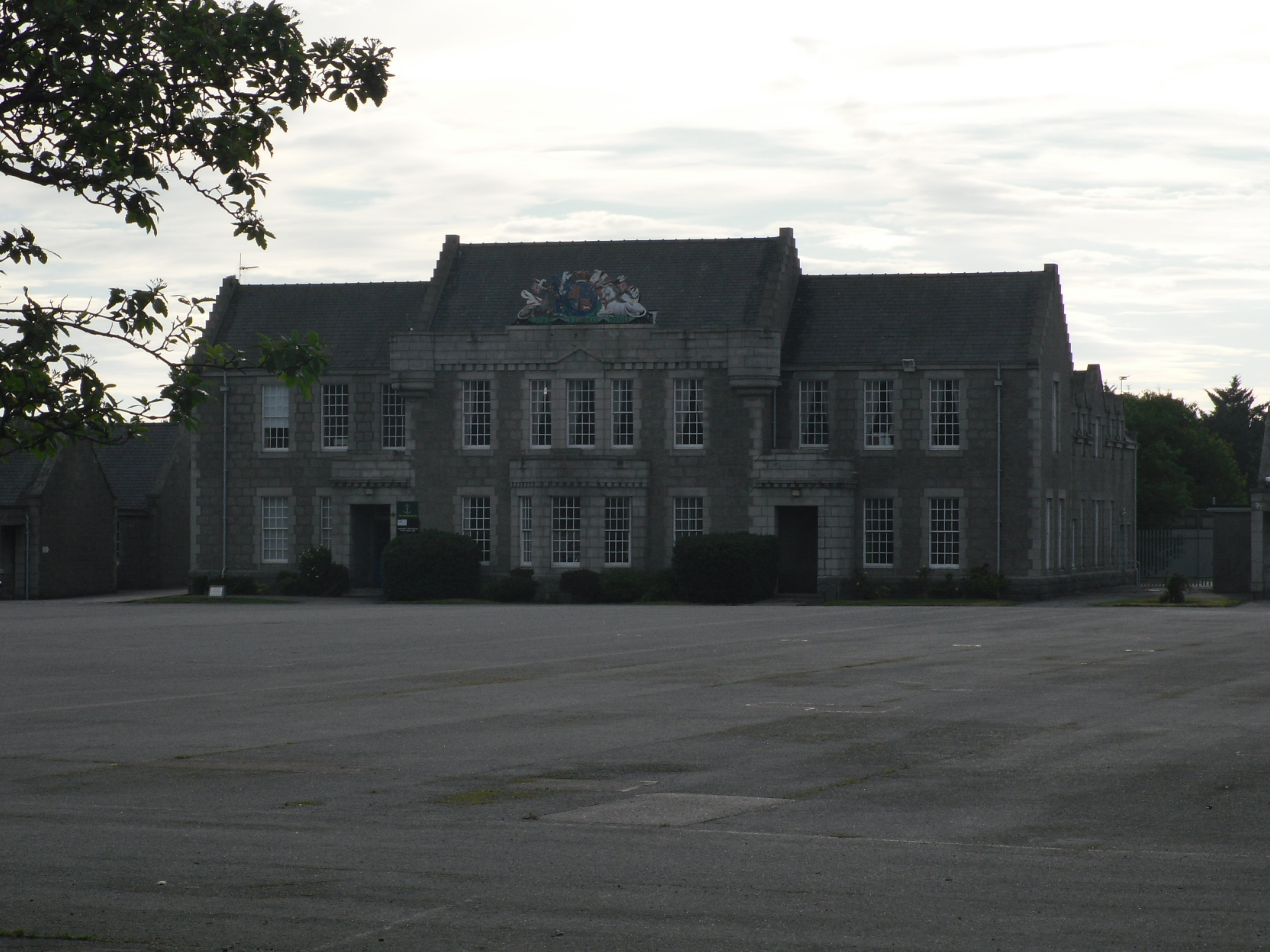|
Sir Iain Colquhoun, 7th Baronet
Sir Iain Colquhoun, 7th Baronet, 29th Laird of Luss, KT, DSO & Bar, FRSE (20 June 1887 – 12 November 1948), was a Scottish landowner and British Army soldier during the First World War. Military career During the First World War, Colquhoun served in the Scots Guards. In 1914, the opposing troops on the Western Front had unofficially observed a Christmas truce. The following year, however, when the 28-year-old Captain Colquhoun agreed to a German officer's request for a short truce on Christmas Day, lasting about an hour, he was brought before a court-martial. He was defended by Raymond Asquith, son of Prime Minister H. H. Asquith (the Prime Minister was Colquhoun's wife's uncle). On 17 January 1916, he was found guilty after a five-hour trial, but received the lightest possible sentence, a reprimand. The sentence was remitted shortly afterwards by General Sir Douglas Haig, as Commander-in-Chief of the British Expeditionary Force, in view of Colquhoun's former distinguish ... [...More Info...] [...Related Items...] OR: [Wikipedia] [Google] [Baidu] |
Picture Of Sir Iain Colquhoun, 7th Baronet
An image is a visual representation of something. It can be two-dimensional, three-dimensional, or somehow otherwise feed into the visual system to convey information. An image can be an artifact, such as a photograph or other two-dimensional picture, that resembles a subject. In the context of signal processing, an image is a distributed amplitude of color(s). In optics, the term “image” may refer specifically to a 2D image. An image does not have to use the entire visual system to be a visual representation. A popular example of this is of a greyscale image, which uses the visual system's sensitivity to brightness across all wavelengths, without taking into account different colors. A black and white visual representation of something is still an image, even though it does not make full use of the visual system's capabilities. Images are typically still, but in some cases can be moving or animated. Characteristics Images may be two or three-dimension, dimensional, su ... [...More Info...] [...Related Items...] OR: [Wikipedia] [Google] [Baidu] |
Arthur Gore, 8th Earl Of Arran
Arthur Kattendyke Strange David Archibald Gore, 8th Earl of Arran (5 July 1910 – 23 February 1983), styled Lord Arran, was a British columnist and politician who served as the Conservative whip in the House of Lords. He is known for leading the effort in the House of Lords to decriminalise male homosexuality in 1967, following the suicide of his gay brother. Early life and education Gore was the second son of Arthur Gore, 6th Earl of Arran and Maud Jacqueline Marie Beauclerk, only daughter of 3rd Baron Huyssen van Kattendyke of Kattendijke, Zeeland, Holland. He was affectionately known as "Boofy". He was educated at Eton and Balliol College, Oxford. Career During the Second World War, Gore worked first as a press attaché at the British Legion in Bern (1939–45) and at the British Embassy in Lisbon (1941–42). He was deputy director of the overseas general division of the Ministry of Information (1943–45) and was secretariat director at the Central Office of In ... [...More Info...] [...Related Items...] OR: [Wikipedia] [Google] [Baidu] |
Segrave Trophy
The Segrave Trophy is awarded to the British national who demonstrates "Outstanding Skill, Courage and Initiative on Land, Water and in the Air". The trophy is named in honour of Sir Henry Segrave, the first person to hold both the land and water speed records simultaneously. The award was established by Segrave's wife, Lady Doris, who was "determined to carry on his legacy". The trophy, designed by sculptor Gilbert Bayes, is awarded by the Royal Automobile Club. It has been awarded in most years since 1930; it is not presented if, in the opinion of the committee, no achievement has been sufficient to deserve the award. Past sponsors of the trophy include Castrol, Ford Motor Company and Aston Martin. The inaugural recipient of the Segrave Trophy was Australian-born Charles Kingsford Smith who flew solo from Ireland to Newfoundland, across the Atlantic, in just over 31 hours. He also won the 1930 England to Australia air race, covering the distance solo in 13 days. British ... [...More Info...] [...Related Items...] OR: [Wikipedia] [Google] [Baidu] |
Fiona Gore
Fiona Bryde Gore, Countess of Arran (née Colquhoun; 20 July 191816 May 2013) was a Scottish powerboating racer who was awarded the 1980 Segrave Trophy. She held the record for the fastest woman on water. World Record In 1980 she became the fastest woman on water, reaching a speed of in a powerboat on Lake Windemere. Marriage Gore was born to Geraldine Bryde Tennant and her husband Iain Colquhoun, Baronet. By her marriage to Arthur Gore, 8th Earl of Arran, she was Countess of Arran. She had two sons, the oldest Arthur Gore, 9th Earl of Arran. Powerboating background Fiona Colquhoun was introduced to speedboats when she was a passenger in ''Miss England III'' in its trial runs on Loch Lomond Loch Lomond (; gd, Loch Laomainn - 'Lake of the Elms'Richens, R. J. (1984) ''Elm'', Cambridge University Press.) is a freshwater Scottish loch which crosses the Highland Boundary Fault, often considered the boundary between the lowlands of Ce .... References {{DEFAULTSORT:Gore, ... [...More Info...] [...Related Items...] OR: [Wikipedia] [Google] [Baidu] |
Sir Charles Tennant, 1st Baronet
Sir Charles Clow Tennant, 1st Baronet JP DL (4 November 1823 – 4 June 1906) was a Scottish businessman, industrialist and Liberal politician. Early life Tennant was the son of John Tennant (1796–1878) and Robina (née Arrol) Tennant. His grandfather was the chemist and industrialist Charles Tennant. Career In 1843, he entered the St Rollox chemical works, Glasgow which had been established by his grandfather Charles to produce bleaching powder and other chemicals, and went on to become the largest alkali works in Europe. Sir Charles Tennant was a global industrialist, with business across many continents in railways, steel, explosives, copper, sulphur and merchant banking. Tennant served as President of the United Alkali Company which would become a cornerstone of Imperial Chemical Industries becoming extremely wealthy in the process while being a supporter of political reform, and a major collector of art. Tennant also became Chairman of the Union Bank of Scotland and was ... [...More Info...] [...Related Items...] OR: [Wikipedia] [Google] [Baidu] |
Royal Society Of Edinburgh
The Royal Society of Edinburgh is Scotland's national academy of science and letters. It is a registered charity that operates on a wholly independent and non-partisan basis and provides public benefit throughout Scotland. It was established in 1783. , there are around 1,800 Fellows. The Society covers a broader selection of fields than the Royal Society of London, including literature and history. Fellowship includes people from a wide range of disciplines – science & technology, arts, humanities, medicine, social science, business, and public service. History At the start of the 18th century, Edinburgh's intellectual climate fostered many clubs and societies (see Scottish Enlightenment). Though there were several that treated the arts, sciences and medicine, the most prestigious was the Society for the Improvement of Medical Knowledge, commonly referred to as the Medical Society of Edinburgh, co-founded by the mathematician Colin Maclaurin in 1731. Maclaurin was unhappy ... [...More Info...] [...Related Items...] OR: [Wikipedia] [Google] [Baidu] |
University Of Glasgow
, image = UofG Coat of Arms.png , image_size = 150px , caption = Coat of arms Flag , latin_name = Universitas Glasguensis , motto = la, Via, Veritas, Vita , mottoeng = The Way, The Truth, The Life , established = , type = Public research universityAncient university , endowment = £225.2 million , budget = £809.4 million , rector = Rita Rae, Lady Rae , chancellor = Dame Katherine Grainger , principal = Sir Anton Muscatelli , academic_staff = 4,680 (2020) , administrative_staff = 4,003 , students = () , undergrad = () , postgrad = () , city = Glasgow , country = Scotland, UK , colours = , website = , logo ... [...More Info...] [...Related Items...] OR: [Wikipedia] [Google] [Baidu] |
Glasgow University
, image = UofG Coat of Arms.png , image_size = 150px , caption = Coat of arms Flag , latin_name = Universitas Glasguensis , motto = la, Via, Veritas, Vita , mottoeng = The Way, The Truth, The Life , established = , type = Public research universityAncient university , endowment = £225.2 million , budget = £809.4 million , rector = Rita Rae, Lady Rae , chancellor = Dame Katherine Grainger , principal = Sir Anton Muscatelli , academic_staff = 4,680 (2020) , administrative_staff = 4,003 , students = () , undergrad = () , postgrad = () , city = Glasgow , country = Scotland, UK , colours = , website = , logo ... [...More Info...] [...Related Items...] OR: [Wikipedia] [Google] [Baidu] |
Lord High Commissioner To The General Assembly Of The Church Of Scotland
The Lord High Commissioner to the General Assembly of the Church of Scotland is the Scottish monarch's personal representative to the General Assembly of the Church of Scotland (the Kirk), reflecting the Church's role as the national church of Scotland and the monarch's role as protector and member of that Church. History Lord High Commissioners were appointed to the Parliament of the Kingdom of Scotland between 1603 and 1707 as the monarch's personal representative. The Act of Union 1707 made this function redundant, but a Lord High Commissioner to the General Assembly of the Church of Scotland has been appointed each year, as the monarch's personal representative, since 1690. The right of the monarch to be present at the General Assembly is enshrined in Church of Scotland's confessional standard, the Westminster Confession of Faith, which says that the "civil magistrate... hath power to call synods, to be present at them, and to provide that whatsoever is transacted in the ... [...More Info...] [...Related Items...] OR: [Wikipedia] [Google] [Baidu] |
Lord Lieutenant Of Dunbartonshire
This is a list of people who have served as Lord Lieutenant of Dunbartonshire. Before the twentieth century, the county was spelled Dumbartonshire. *John Elphinstone, 11th Lord Elphinstone (17 March 1794 – 19 August 1799) *John Elphinstone, 12th Lord Elphinstone (19 November 1799 – 20 May 1813) *James Graham, 3rd Duke of Montrose (10 July 1813 – 30 December 1836) *Sir James Colquhoun, 4th Baronet, of Luss (14 January 1837 – 18 December 1873) *Humphrey Ewing Crum-Ewing (23 February 1874 – 3 July 1887) *Sir James Colquhoun, 5th Baronet (24 August 1887 – 13 March 1907) *John White, 1st Baron Overtoun (13 April 1907 – 15 February 1908) *James Burns, 3rd Baron Inverclyde (21 May 1908 – 16 August 1919) *Sir Iain Colquhoun, 7th Baronet (4 November 1919 – 12 November 1948) *Maj. Gen. Alexander Telfer-Smollett (2 February 1949 – 9 October 1954) *Angus Cunninghame Graham, Admiral Sir Angus Cunninghame Graham (5 January 1955 – ... [...More Info...] [...Related Items...] OR: [Wikipedia] [Google] [Baidu] |
Officers' Training Corps
The Officers' Training Corps (OTC), more fully called the University Officers' Training Corps (UOTC), are military leadership training units operated by the British Army. Their focus is to develop the leadership abilities of their members whilst giving them an opportunity to take part in military life whilst at university. OTCs also organise non-military outdoor pursuits such as hill walking and mountaineering. UOTC units are not deployable units nor are their cadets classed as trained soldiers. The majority of members of the UOTC do not go on to serve in the regular or reserve forces. History General history of the units The emergence of the Officers' Training Corps as a distinct unit began in 1906, when the Secretary of State for War, Lord Haldane, first appointed a committee to consider the problem of the shortage of officers in the Militia, the Volunteer Force, the Yeomanry, and the Reserve of Officers. The committee recommended that an Officers' Training Corps be formed. ... [...More Info...] [...Related Items...] OR: [Wikipedia] [Google] [Baidu] |




